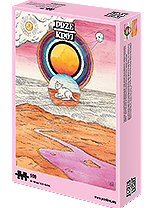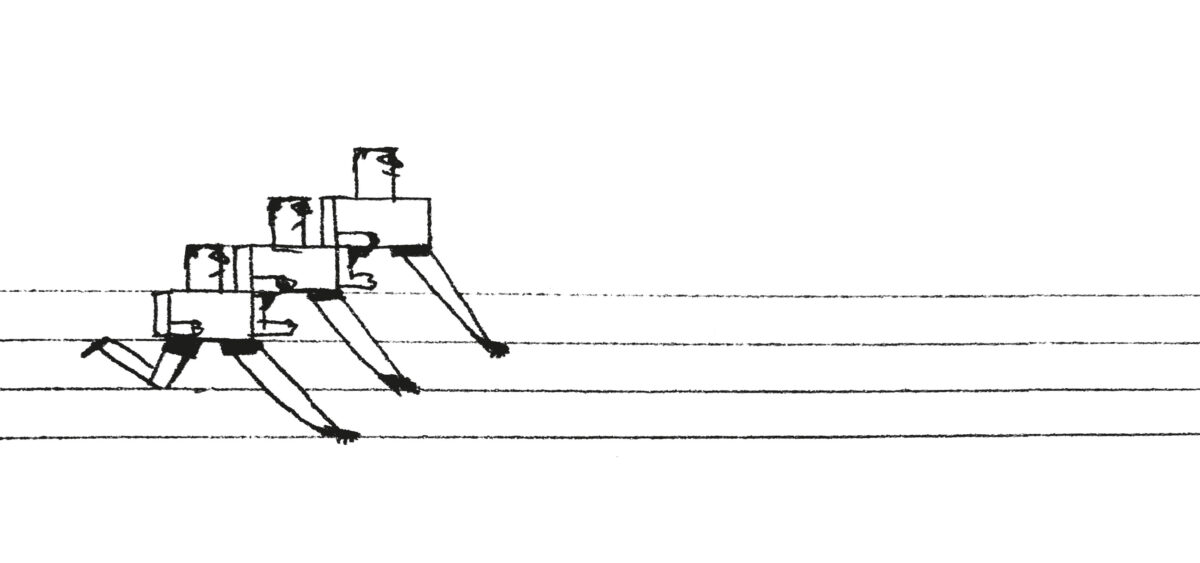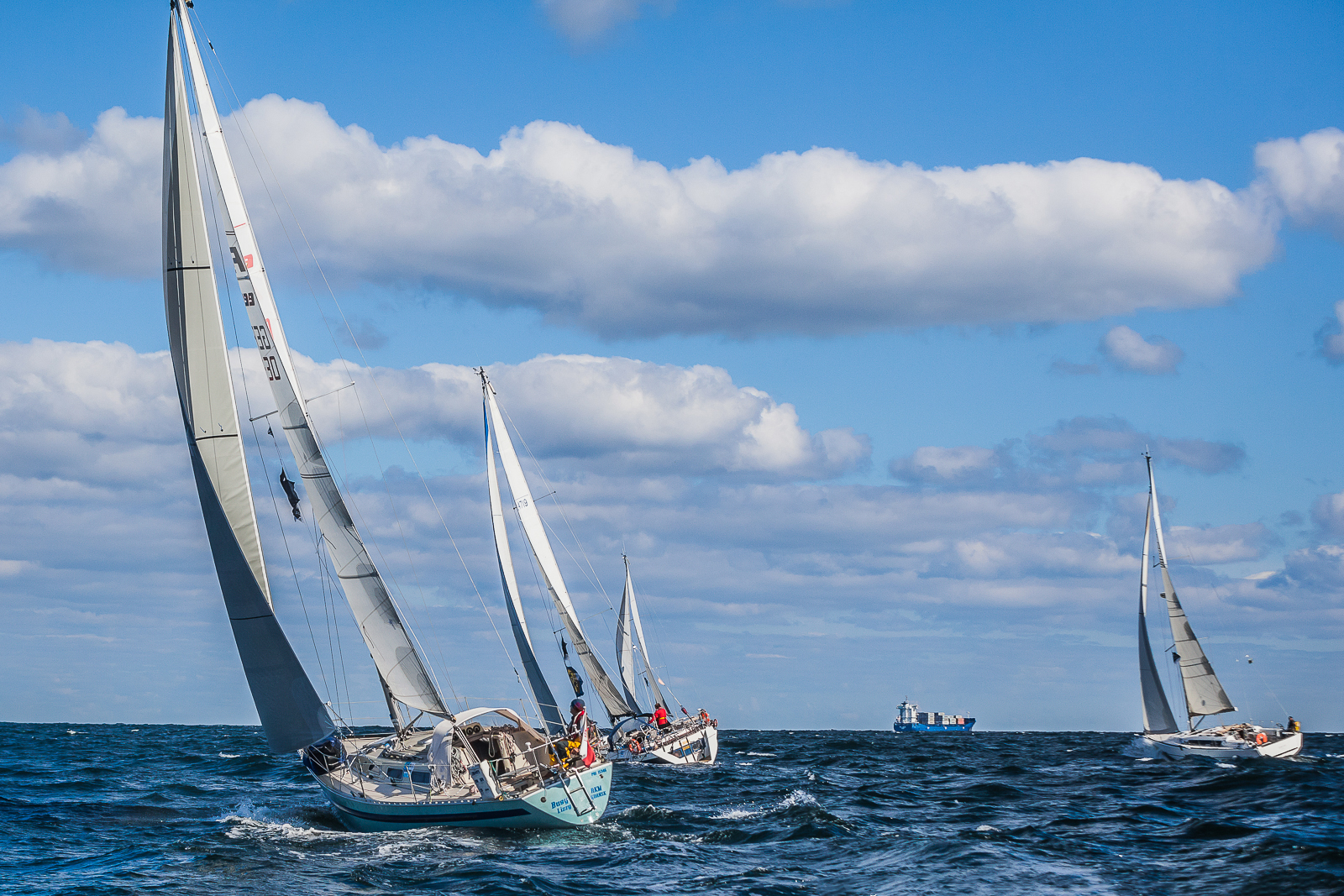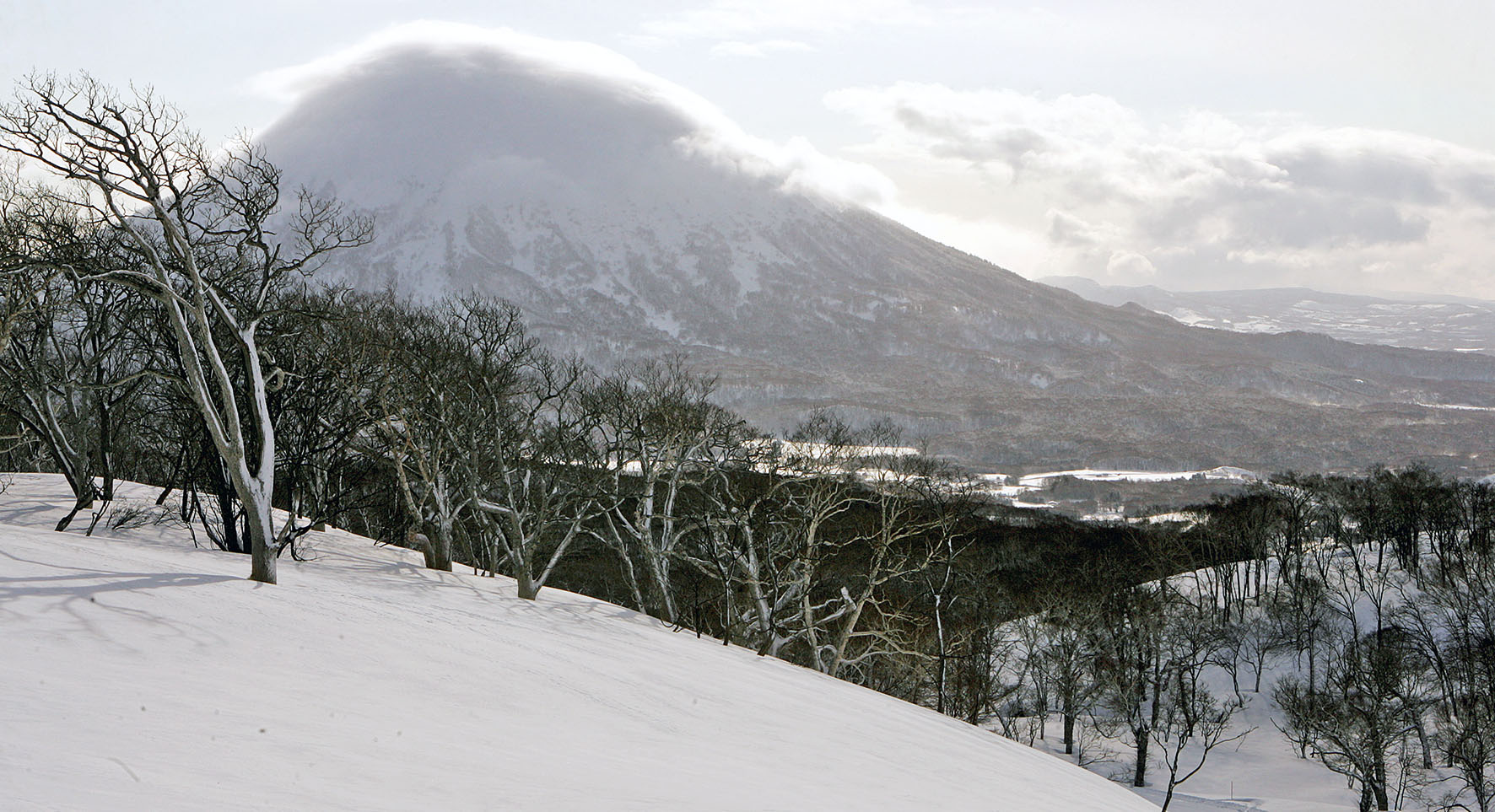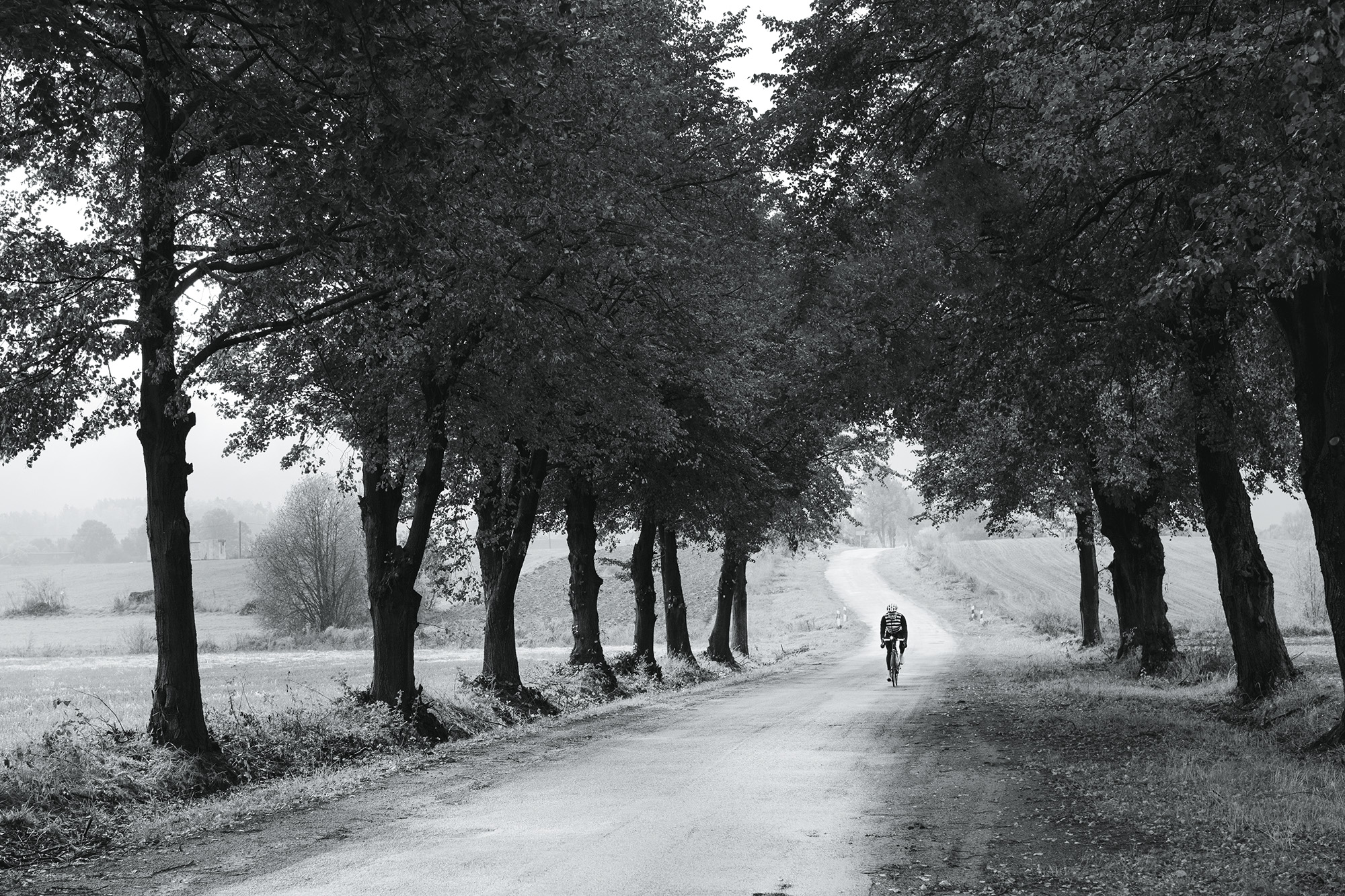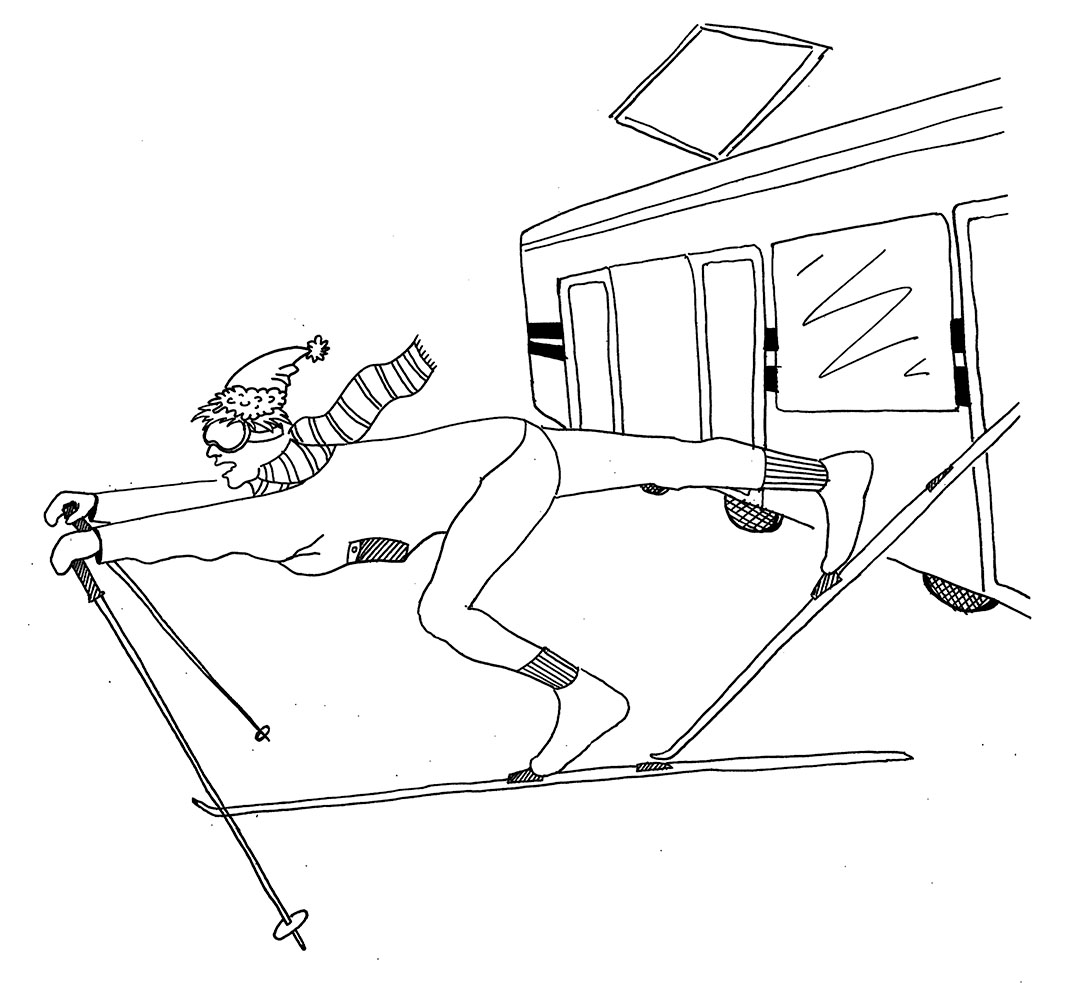
In an ordinary race, the one who crosses the finish line first wins. In Antarctica, more than one person can be first, as is shown by the story of an American, a Brit and a Norwegian.
The American, Colin O’Brady, had just finished university; he was enjoying life and seeing the world, ending up at the Thai island of Koh Tao. Every month, the locals organize the Full Moon Party on the beach. It’s not about any kind of tradition, ritual or anything like that; you just have to give the tourists an excuse to spend money, drink by the bucket (literally) and party all night. Fire shows are one of the attractions. They’re done by professionals, but there’s also an element of audience participation. O’Brady jumped over a flaming skipping rope held by two locals. Today he says it wasn’t the smartest idea, especially as he wasn’t wearing shoes, but at the time, in a haze of alcohol and other substances, there was no tomorrow. He missed one jump. The line fell between his legs, and O’Brady started to burn. Before he made it to the water, 25% of his body was burnt. After eight operations, the doctors told him he most likely would never walk normally again. They were wrong.
In the name of Amundsen and Scott
“A race? What do you imagine mountain climbing looks like?” says Adam Bielecki, a top Polish climber, when asked whether he’s excited by the race to be first to climb K2 in winter. “Everybody wants to climb somewhere where nobody’s ever been. But it’s not a rivalry in the strict sense. I don’t like that; as a child I competed in climbing competitions and it didn’t bring me any joy. I race against myself.”
Indeed, expeditions to 8000-metre peaks, exploring the Poles, exploits where defeat is closer to death than disappointment, aren’t a 100-metre dash. During such exploits you compete against the cold, wind and, most of all, yourself, to survive. Out there, you can’t worry about whether somebody gets to the finish line first. But the world tries to squeeze the expeditions of climbers, polar explorers and travellers into the framework of a competition, because that ensures additional emotions, and the public consumes such feats more easily and eagerly.
It’s nothing new. Mark Zuckerberg couldn’t walk yet when Jerzy Kukuczka and Reinhold Messner were competing, in the eyes of the world, to be first to conquer the Crown of the Himalayas and Karakorum, meaning the summits of all 14 8000-metre peaks. And it made no difference that they didn’t at all believe they were competing with each other.
In Antarctica, the racing started a lot earlier. At the end of 1911, the finish line for Roald Amundsen and Robert Falcon Scott was the South Pole, still untouched at that point. Scientific research remained in the background, but who wouldn’t have ambitions when it comes to setting foot where nobody else ever had? The Norwegian started 11 days earlier and turns out to have prepared better for the expedition (for reasons including bringing dogs; Scott bet on ponies, which had decidedly less stamina), and reached the goal first. The Brit arrived at the Pole 34 days later, finding a Norwegian flag, and a tent containing provisions and a letter to the King of Norway, with a request that it be delivered if Amundsen didn’t manage to return. Scott was second, or – as he understood it – the loser. He set out on the return journey, but his team’s strength ran out. All of them froze to death.
After Amundsen’s feat, polar explorer Ernest Shackleton wrote that there remained “one great main objective of Antarctic journeyings – the crossing of the South Polar continent from sea to sea.” As it turned out, future generations had more imagination: it became a challenge to cross the continent on a bicycle, to get to the Pole alone, or to do it in a record short time. In a word, people started to crank out Antarctic accomplishments.
To complete the master’s work
After O’Brady returned from Thailand, his mother advised him to set a difficult goal, which would motivate him. He chose a triathlon, a brutally tough race comprising swimming, biking and running. Two years later he won in Chicago – the first win of many, it turned out. Then he started to go where theoretically nobody goes. In 139 days in 2016, he completed the Explorers Grand Slam, meaning he made it to both Poles and the highest peaks on all continents.
But another challenge trumped the earlier ones. Antarctica has been crossed, with a stop at the Pole, by a total of 16 explorers. But all of them used some kind of help. Kites, sails and animals that pulled their sleds through the snow; airdropped packages with food and fuel. Earlier just two had attempted it solo, like O’Brady. One, Henry Worsley, dropped out after 52 days; 200 kilometres from the finish line, he had to call for help. A few days later he died of peritonitis.
Worsley was no amateur, but somebody who wasn’t bothered at all by the –40°C temperature. He had served in the military for 36 years, organized an expedition through the Transantarctic Mountains, made it to the South Pole. He brought his old barracks-mate Louis Rudd with him on various trips. Rudd had also lived a full life. He joined the British Army as a teen and had deployed to Northern Ireland, Kosovo, Iraq and Afghanistan. At the start of this decade, when he was over 40, he took on Antarctica. Rudd used to say that while various dangers were indeed lurking there, at least nobody would be shooting at him. In the end, he travelled more than 2500 kilometres over the icy continent. After Worsley’s death, he decided to complete the master’s work.
While they were both making expedition plans, Rudd and O’Brady were not quite aware of each other. When Rudd announced his plans in April 2018, he thought he’d be flying to Antarctica alone. A few weeks before starting his expedition, in October, he learned about the 34-year-old American’s plans… from Instagram. They met for the first time in the Shackleton bar in Chile’s Punta Arenas, just before flying to the starting line. There they decided to race.
A day later, they boarded the Il-76 that transported them to Antarctica. On 3rd November 2018, a smaller plane took them to the point known as the Messner Start (from which in 1989 the Italian Messner and Arved Fuchs started their trek across the continent). O’Brady got out first; 1.6 kilometres later, Rudd.
Seven four-cheese pizzas, please
Since the explorers could count only on their own muscles, they took everything they needed with them. They dragged tents, sleeping bags, cameras, satellite phones with solar batteries – but, of course, the heaviest thing on their 170-kilogram sleds was food. O’Brady ate oatmeal, soup, freeze-dried food, protein shakes. A sponsor gave him Colin Bars – energy bars made up of coconut oil, nuts and seeds. Rudd’s menu differed, with hot chocolate for breakfast and salami, cheese and trail mix he had bought in Chile. In total, they had to consume at least 7000 calories a day each. That’s like eating seven XXL four-cheese pizzas on thin crust. A vegan would have to take on board three kilograms of hummus, with seven pitas.
But both O’Brady and Rudd lost weight at a shocking rate. Covering more than 30 kilometres a day, each burned 10,000 calories. And that was for almost two months and over almost 1500 kilometres, in temperatures that fell below –30°C. And in the Antarctic summer, when the sun shines 24 hours a day.
“I’ve never pulled anywhere near that before, and I’m not getting any younger,” said Rudd.
But even later, when there was less food, they suffered every morning. They would wake up at 6.10am (O’Brady) or 7.00am (Rudd). By the time they had got ready, made breakfast and packed their tents, almost two hours had passed.
O’Brady divided the day into eight 1.5-hour stages, Rudd into eight or nine of 70 minutes each. After finishing each one, they’d take in more calories. Only the American stopped for something we’d call lunch; the Brit ate on the run, or more precisely, while shuffling his feet. While both wore cross-country skis, they didn’t look anything like Olympians, scampering over the snow. They moved slowly, step by step, especially before reaching the Pole, because they were going uphill – it’s more than 2800 metres higher than the place where they started. During this stage, their travel was also hindered by sastrugi – grooves and ridges of snow formed by the wind. It’s hard enough to get through them on foot, let alone pulling sleds.
If nature decided to help them in the evenings, it was easier. In moderate wind, pitching a tent took 20 minutes. But sometimes it was blowing so hard that the operation stretched out to 1.5 hours. Rudd started everything a little later; when he completed his daily plan, he didn’t stop, but took another 11 steps. Because somebody calculated that if Scott had taken 11 more steps each day, he would have survived.
Making their beds didn’t end the day; before going to sleep they also had to feed the media, meaning their sponsors. If they hadn’t promised regular reports, they wouldn’t have raised $200,000 each to organize their expeditions. The race was covered by the New York Times; Rudd recorded an audioblog; O’Brady sent photos and reports that his wife posted on Instagram. So they experienced complete solitude – which Rudd would later call the greatest blessing and challenge – only during the day. But they didn’t suffer from silence; Rudd stepped to the rhythms of U2 and Pink Floyd, and finally had time to listen to an entire biography of Winston Churchill. O’Brady preferred podcasts, once writing on Instagram that the album Graceland was playing in his ears. Paul Simon contacted his team; later they spoke for half an hour by satellite phone.
After reaching the Pole, both explorers met with scientists from the Amundsen–Scott research station. But to stick to the rules about crossing alone and without assistance, they couldn’t accept even a mug of tea.
There was another difference between O’Brady and Rudd. O’Brady brought four rolls of toilet paper. Rudd used ice. That’s important: Antarctica isn’t a landfill; the penguins haven’t set up cleaning companies. There can be no thought of throwing anything away – you have to bring your waste with you. You can pee on the snow, but anything more substantial has to be buried 15 centimetres below it and marked, so workers from Antarctic Logistics & Expeditions (which organizes the treks) could pick it up later.
Where Antarctica begins and ends
At first Rudd was leading, but a week later O’Brady was in front. Later, both lived through some bad moments. One day, the younger American lost a few hours repairing his skis, letting his rival narrow the gap to 19 kilometres. In general, though, well before the finish line it was clear that only O’Brady could win. What’s more, he could afford a spectacular finish: he did the last 124 kilometres in a single burst, going 32 hours without sleep. He wasn’t listening to music anymore; he was like the Duracell bunny, who keeps on going, his battery never running out. After he reached the goal, O’Brady still had enough energy to announce on Instagram that he was the first to cross Antarctica alone and unaided, from coast to coast, and that he wouldn’t leave until Rudd arrived. He waited two days.
When it seemed perfectly clear who had won, a certain Norwegian, Børge Ousland, wrote on Facebook: “We congratulate Colin O’Brady with his achievements in Antarctica. But in 1997 Børge Ousland was the first person to ski alone across Antarctica.” After leaving the army, the 57-year-old had worked in oil companies on the North Sea. In the 1990s, he made it to the North Pole alone and unaided twice, starting from a different place each time. And in late 1996 and early 1997, he crossed the Antarctic in 64 days, completing the route that Amundsen had taken 100 years earlier. He started at the Weddell Sea, finishing at the Ross Sea. He completed 3000 kilometres, twice as much as O’Brady and Rudd, because they didn’t consider the ice shelves to be part of the continent. They started at the end of the Filchner-Ronne Ice Shelf, and ended at the start of the Ross Ice Shelf. But the Norwegian literally went from coast to coast.
The American and the Brit hadn’t taken this expedition into account, because Ousland used a sail. He responded that of course the wind had helped, but only on the second part of the route, after crossing the Pole, when it was downhill anyway. In any case, that certainly means that he used some kind of help. That might be a weak explanation, but when the polar row broke out and people began looking at both expeditions closely, doubts started to arise about O’Brady and Rudd’s feats.
After passing the Pole, both of them chose the easiest route: they took a path that by Antarctic standards could be called a motorway. Powerful tractors regularly compress and level the snow, because this is how supplies are delivered to the Amundsen-Scott station. There are no sastrugi; you pass a flag every 100 metres, so navigation is unnecessary. All of that makes the trek twice as fast, so some polar explorers believe you can’t put this achievement in the category of ‘unaided’.
Ousland took a different, wild and more demanding route. He used a compass, the sun and a paper map, and only in the evening found time to start up his still-primitive GPS and determine his exact position. There was no thought of chats with family and Instagram posts – and not only because there was no Instagram yet. He really was alone, and what’s more, he knew that if he ran into trouble it would be hard to summon help, and even if he managed, it might arrive too late.
How can we resolve this dispute? It’s hard to imagine a committee to decide what is and isn’t outside aid, where Antarctica starts and ends, what you are and aren’t allowed to take along. Bielecki calls the mountains “a zone of freedom”, and the Poles are another one. But in the end, it’s about the journey. Rudd made the trek in the name of his friend who died in Antarctica; O’Brady because he wanted to prove that nothing had ended on that Thai beach. All the rest is packaging, created by the media and the public.
Sources include articles in the New York Times and National Geographic.
Translated from the Polish by Nathaniel Espino

